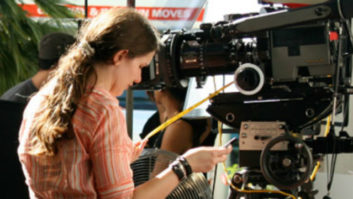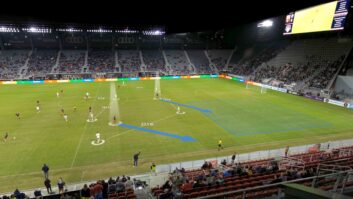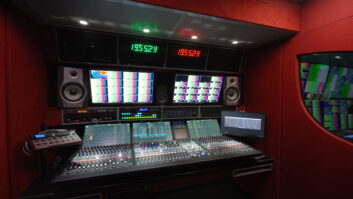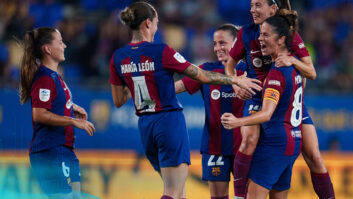Bavarian broadcaster BR’s FÜ1 HD truck was used to generate broadcast coverage of multiple matches at the latest FIFA Women’s World Cup, which reached a conclusion last weekend with a victory for Japan in a tense penalty shoot-out.
German national broadcaster ARD and ZDF both used OB vans belonging to multiple public broadcast operators, who produced and broadcast the unilateral output. Bavarian broadcaster BR’s FÜ1 HD truck (pictured here during another, 2010, event) was employed for coverage of the opening match, featuring the German team, in Berlin, as well as a North Korea-Sweden match and a quarter-final featuring Sweden and Australia.
The technical infrastructure on the BR FÜ1 HD truck includes eight cameras and a Lawo mc²66 desk as the main console for audio production. Designed for two-man operation, the mc²66 installed in the FÜ1 HD truck features 52 faders in a 32-8-16 frame, 336 DSP channels, and an HD-Core with integrated audio router. The router is equipped with three AES cards for BNC and D-sub connection and has a routing capacity of 8,000 x 8,000 crosspoints. Overall, the truck has 12 Lawo DALLIS-I/O systems redundantly connected to the HD-Core. Three of these are used as stageboxes, allowing the connection of up to 80 microphones.
The events were broadcast conventionally and in 5.1. meaning that there were “quite a lot of input channels to deal with,” said BR audio production engineer Jürgen Becker. “This is one of the reasons we pre-configured the mc²66 in FÜ1 HD to be operated by two sound engineers.”
During the run-up to the broadcast, the OB crews created console set-ups that only required slight adjustments on the night. They also prepared for the integration of various playback devices, including two EVS units – each with four channels audio and video – and microphone comms, including wireless mics for presenters and interviewers.
Explaining the advantages of Lawo consoles, one of the on-site sound engineers, Gerhard Fischer, reflected: “It offers extremely quick access to any signal by means of buttons on the control surface, but, more importantly, its overall controls are so very intuitive. The Audio-follow-Video function also came in handy during broadcasts of the Women’s World Cup. A commentator could, for example, trigger the opening of an atmos microphone at the push of a button, so preventing an atmos change when the commentator mic was closed.”






